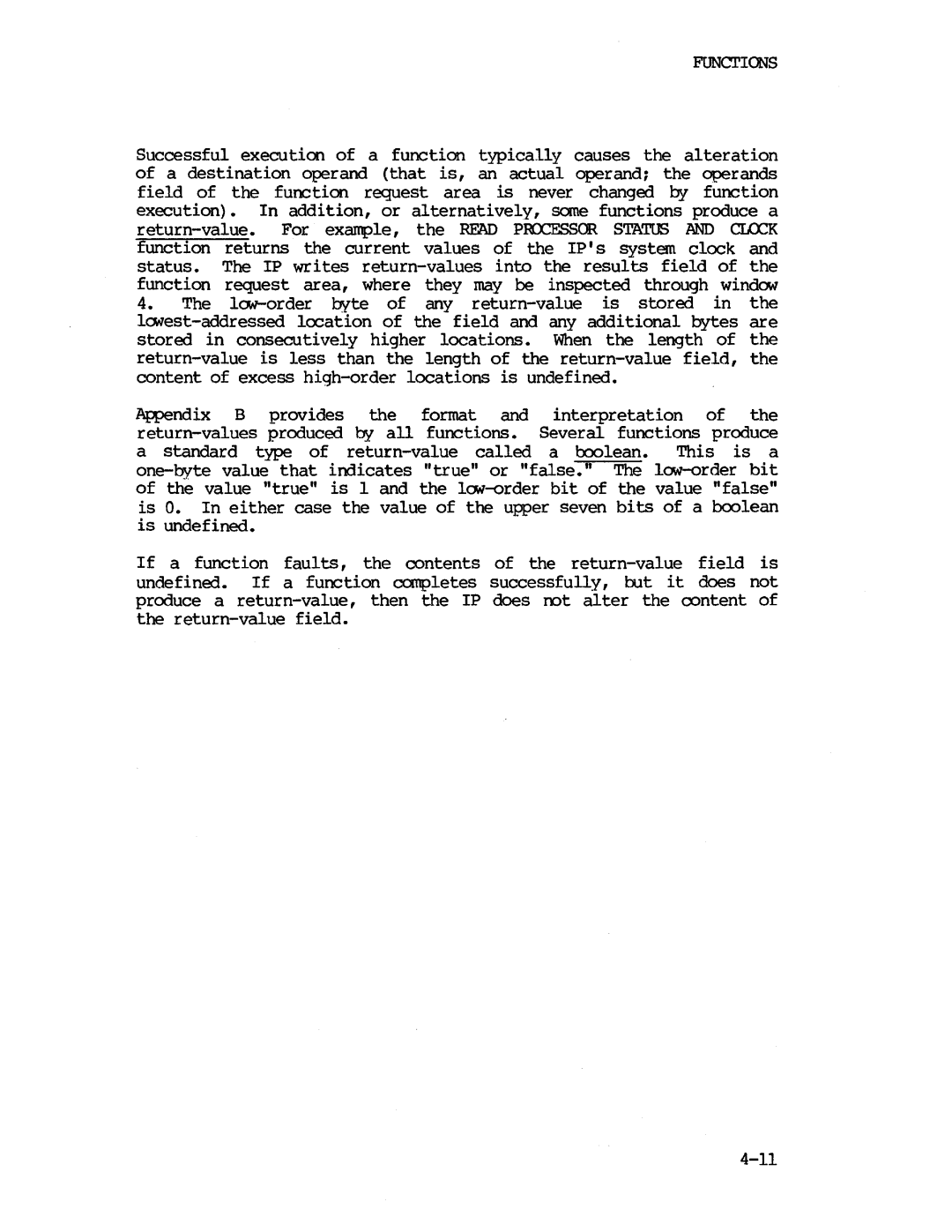
FUNCl'IONS
Successful execution of a function typically causes the alteration of a destination operand (that is, an actual operand~ the operands field of the function request area is never changed by function execution). In addition, or alternatively, same functions produce a return-value. For example, the READ PR:CESSOR STATUS AND CLOCK function returns the current values of the IP' s system clock and status. The IP writes return-values into the results field of the function request area, where they may be inspected through window
4.The low-order byte of any return-value is stored in the lowest-addressed location of the field and any additional bytes are stored in consecutively higher locations. When the length of the return-value is less than the length of the return-value field, the content of excess high-order locations is undefined.
Appendix B provides the format and interpretation of the return-values produced by all functions. Several functions produce
a standard type of return-value called a boolean. This is a one-byte value that indicates "true" or "false." The low-order bit of the value "true" is 1 and the low-order bit of the value "false" is O. In either case the value of the upper seven bits of a boolean is undefined.
If a function faults, the contents of the return-value field is undefined. If a function canpletes successfully, but it does not produce a return-value, then the IP does rot alter the content of the return-value field.

